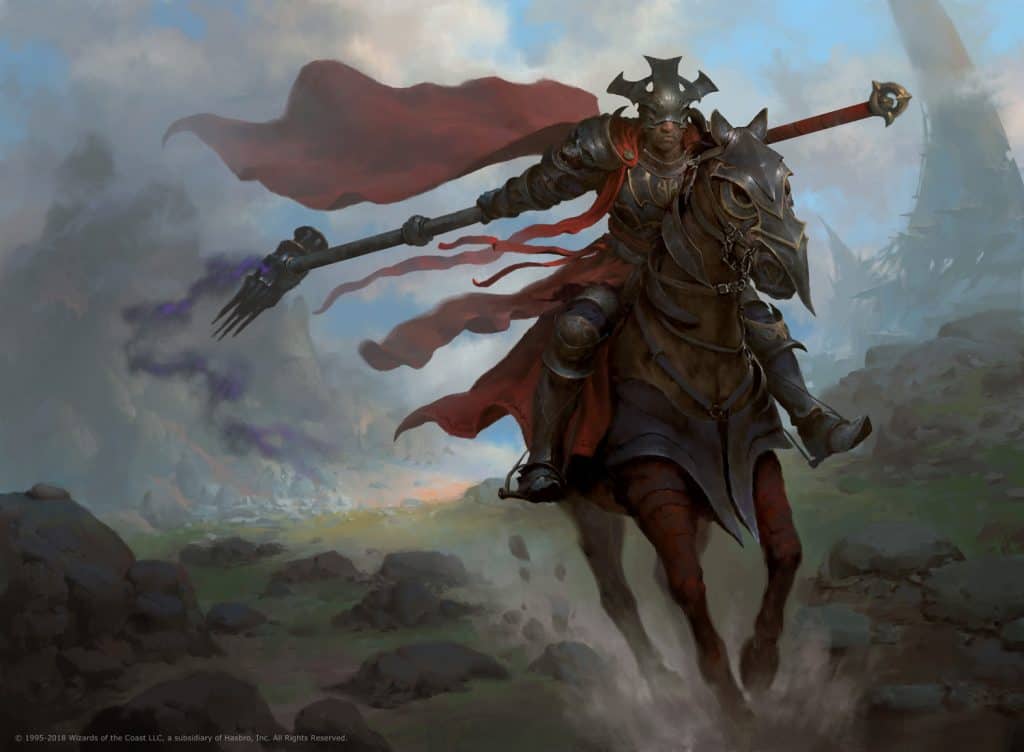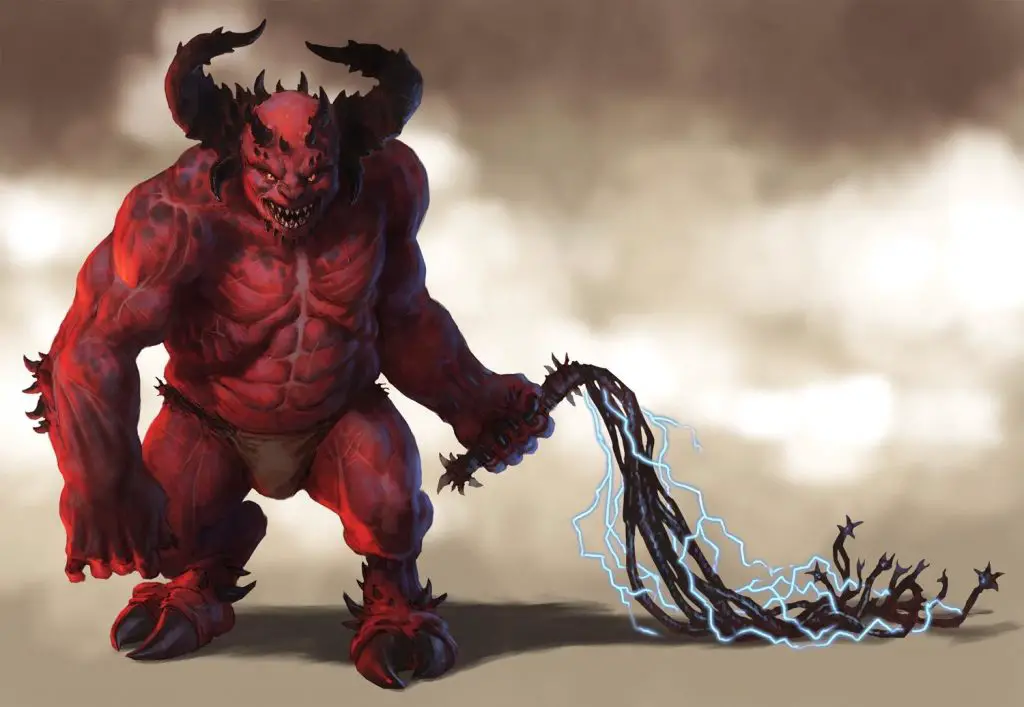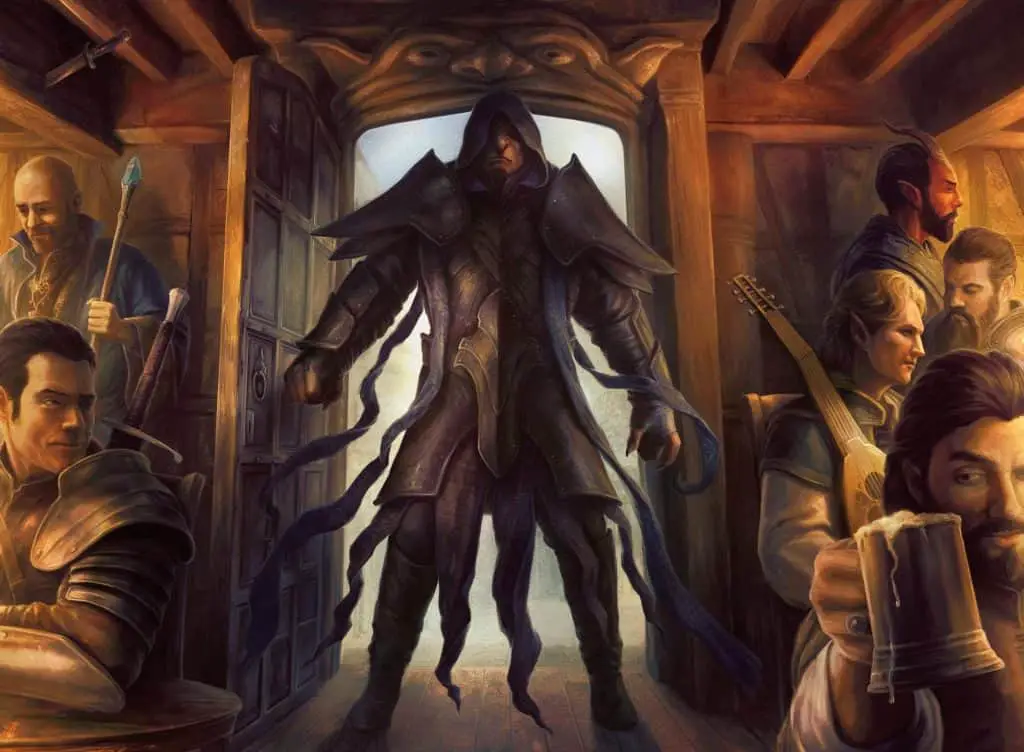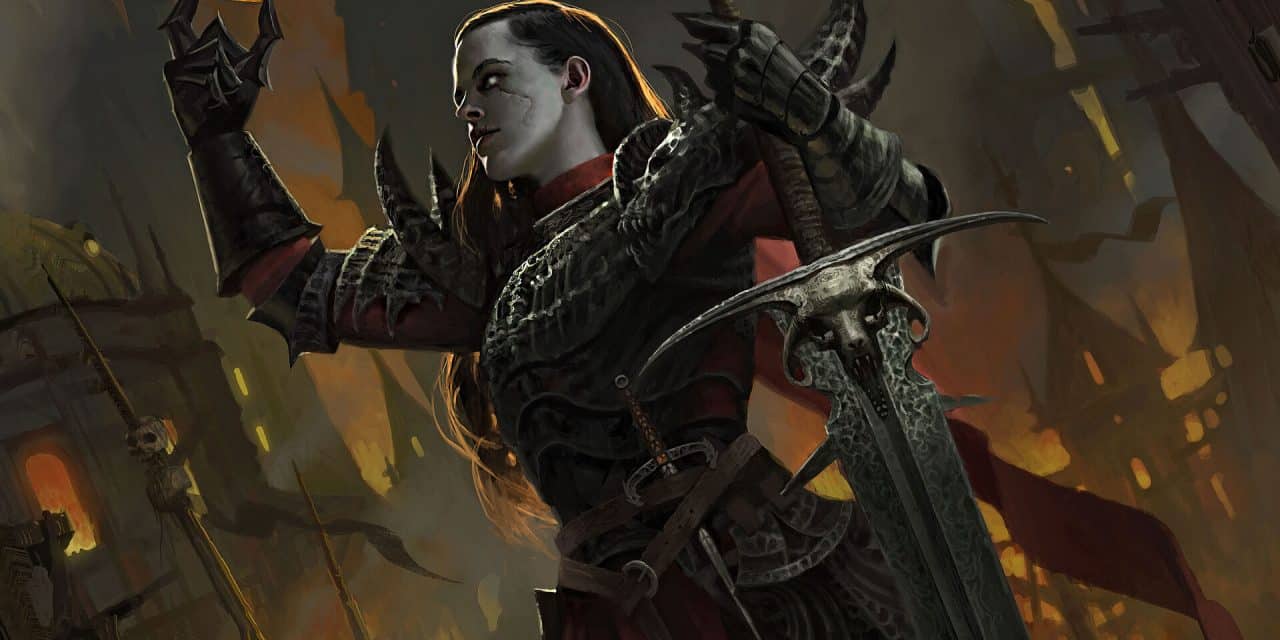Not every Paladin is fated to become a legendary and divine hero.
Instead, some become corrupted and give in to a ravaging darkness and hatred inside of them. Abandoning the Oath that once guided them, the Paladin becomes an Oathbreaker.
Today we are shunning the light and peering into the darkness…
This is the full subclass guide to the Oathbreaker Paladin in D&D 5e!
What is the Oathbreaker Paladin in D&D 5e?
The Oathbreaker Paladin is a Paladin subclass hidden away in the 5e Dungeon Masters Guide. While it is more intended for a villain NPC, it can still be played with your DM’s permission.
Interestingly, the Oathbreaker is one of the only (possibly THE only) subclasses that have an extra requirement to take it. Specifically, a character must be of evil alignment to take the Oathbreaker Paladin subclass.
There’s a big focus on necrotic damage and the undead with this subclass. But considering that this is the anti-Paladin, that’s probably expected!
Breaking Your Oath
Paladins are a very powerful class and the tenets of the Oaths that they swear are taken very seriously. Should a Paladin consistently fail to uphold these tenets and ignore warnings regarding their behavior, the Divine source of their power might be cut off.
Until the Paladin sufficiently atones, they won’t have use of Paladin features like Divine Smite, Lay on Hands, or the spells from the Paladin Spell List in addition to those features granted by their subclass.
Needless to say, this puts the Paladin in a bit of a bind.
It’s at this point that the Paladin has a choice to make. They can spend the time and effort attempting to regain the favor of their Deity and renew their Oath or they can take a shortcut…
A Paladin that embraces the path of the Oathbreaker succumbs to darkness.
While they will recover some of their previous powers (features from the Paladin class) they bid farewell to the benefits from the Oath they once swore. Instead, they get a selection of new powers.
While the Oathbreaker may not have a new Oath, they still serve a new and darker power whether they know it or not.
Repentance
Not every grievance or moral failing is enough to turn a Paladin into an Oathbreaker. After all, nobody is perfect!
If a Paladin does not want to become an Oathbreaker, they have to repent for their actions. Depending on the nature of their Oath and order, they might need to take certain actions in addition to confessing their sins.
For example, a Paladin might:
- Visit a temple of their deity and seek absolution from a Cleric or another Paladin
- Practice self-denial by fasting for some period of time (usually a number of days)
- Spend an entire night standing in prayer
Once the Paladin has confessed and sought forgiveness for their sins, things are back to normal for them.
It is only when a Paladin willfully violates their Oath and makes no attempt to repent that things begin to get more intense. Depending on the nature of what they have done (and the DM), the Paladin may become an Oathbreaker.
Atonement
Becoming an Oathbreaker is not necessarily the end of the story for a once-good Paladin. Even in their darkest moments, these souls are not beyond redemption.
But it will take work and demonstration of true change.
An Oathbreaker who wishes to atone must first shed their evil alignment. Because actions speak louder than words, they will need to actively work to demonstrate this change of alignment with their words and deeds.
When this has been clearly demonstrated, the Paladin loses all of their Oathbreaker features. They then choose a deity and a Sacred Oath (subclass) to commit themselves to. This deity/oath does not need to be the same as the Paladin previously had.
But they don’t get the benefits and features of their chosen Oath just yet.
The Paladin must complete some dangerous trial or quest. The nature of this depends on the DM and story. If the Paladin is able to prove their faith and resilience, they become a full-fledged Paladin once again.
But this only works once.
Should the Paladin fail to uphold their Oath again, their powers will be gone forever. They can become an Oathbreaker once more, but they will forever be beyond atonement.
As the saying goes, “fool me once, shame on you; fool me twice, shame on me.”
Role in the Party
The Oathbreaker is an absolute bruiser. Locking enemies down with some nasty effects and then burying them in damage dice rolls is what the Oathbreaker does best.
You’ll want to play very aggressively but keep tactical control over the battlefield.
As you back enemies into corners, grow your side of the field with some undead minions, and smite the daylights out of anyone who even looks at you funny, it will take a very concentrated approach to stop your rampage.
Teamwork isn’t exactly the Oathbreaker’s strong suit. They aren’t buffing their allies like most other Paladins. It’s up to your team to either fall in line or get out of your way.
Oof… Now THAT’S brutal!

Oathbreaker Paladin Features 5e
The Paladin’s previous Oath features are replaced with that of the Oathbreaker subclass.
Oathbreakers still have access to core Paladin features such as Divine Smite, Lay on Hands, Divine Sense, and the Paladin spell list.
But the nature of Oathbreakers is that they are evil and selfish. If they are doing any healing, it is solely for their own benefit.
It might make sense to homebrew some changes to fit the Oathbreaker’s theme more. You might change Lay on Hands to deal damage rather than heal and Divine Smite to deal necrotic damage. Check with your DM and make changes that make sense!
But with all that said, let’s get into the specific features the Oathbreaker subclass offers.
Oathbreaker Spells
Normally a Paladin would gain spells from some Divine source and the intensity of their Oath.
Instead, the Oathbreaker’s spells come from something much more sinister. The flood of negative emotions and darkness in their hearts has opened them up to a very different influence.
Evil Deities are tricky and an Oathbreaker doesn’t need to explicitly serve an evil deity like Wee Jas or Myrkul for them to take interest.
Even if the Oathbreaker believes that these powers come from within themselves, there is certainly some malevolent force behind them and stoking the flames of hatred.
At each of the levels that you see on the table, you gain bonus spells. These spells are always prepared and don’t count against the number of spells you can prepare each day.
If a spell isn’t from the Paladin spell list, it still counts as a Paladin spell for you.
| Paladin Level | Oathbreaker Spells |
| 3 | Hellish Rebuke, Inflict Wounds |
| 5 | Crown of Madness, Darkness |
| 9 | Animate Dead, Bestow Curse |
| 13 | Blight, Confusion |
| 17 | Contagion, Dominate Person |
How’s that for some intensity?
Thoughts on the Oathbreaker Spell List
All things considered; this is a pretty good spell list. You’ll definitely be using some spells and completely forgetting about others.
Hellish Rebuke is a great way to punish enemies that land a hit on you. Inflict Wounds is alright, but you’ll realistically be putting out better damage with your weapon attacks + Divine Smite.
Crown of Madness is a fun spell, but it’s very difficult to get reliable use out of. Darkness could be helpful in some situations, but not being able to see in magical darkness really limits how you can use it.
The spells you gain at level 9 are some very strong options that also really fit the Oathbreaker’s theme. Bestow Curse gives you several options for how to ruin your enemies’ day.
Need some extra minions? Animate Dead has you covered!
Confusion is a notoriously unreliable spell, so it’s likely not worth spending the spell slot. Blight can be useful in the right situations. If an enemy likely has a low Constitution score or is a plant creature, it will go much farther.
The spells you gain at level 17 are very powerful options. Dominate Person is just fun and can have a major effect on a combat.
Contagion is a weird spell but it gives you multiple ways to completely destroy an enemy. Slimy Doom is probably the best effect but the damage vulnerability from Flesh Rot can lead to some truly nasty damage rolls (in a good way)!
Related: The Best Paladin Spells By Level in D&D 5e!
Channel Divinity (Level 3)
As with all Paladins, you have two options for how to use your Channel Divinity.
Keep in mind that this feature recharges on a short or long rest. When enemies make saving throws against these effects, they are making them against your Paladin Spell Save DC.
Control Undead: As an action, target one undead creature you can see within 30 feet of you. The target must make a Wisdom saving throw. On a failed save, the target must obey the Paladin’s commands for the next 24 hours or until the Paladin uses this Channel Divinity option again.
An undead whose challenge rating is equal to or greater than the Paladin’s level is immune to this effect.
If you’ve ever wanted an undead as a pet, this is your chance!
The 24-hour duration is bonkers. You can likely “catch” a pretty strong undead creature and keep this on it for a very long time. As long as it’s failing its Wisdom saves (which spells like Bane can help with), you’ll be BFFs.
Just don’t forget to feed and water them. Oathbreaker or not, you need to be responsible.
Dreadful Aspect: As an action, each creature of your choice within 30 feet of you must make a Wisdom saving throw if they can see you. On a failed save, the target is frightened of you for 1 minute.
If a creature frightened by this effect ends its turn more than 30 feet away from you, it can attempt another Wisdom saving throw to end the effect on it.
Turning enemies isn’t uncommon for Paladins. Devotion Paladins can turn undead, Ancient Paladins can turn fiends and fey…
This lets you send everyone and everything around you screaming in the other direction!
Ok, so they don’t HAVE to run but they’ll need to if they want to shake the frightened condition. Until they do, they can’t move closer to you and will have disadvantage on their ability checks and attack rolls while you’re in their line of sight.
Aura of Hate (Level 7)
At level 7, your aura is a powerful buff for yourself and any of your similarly evil allies. (Though it’s a bit of a double-edged sword.)
You as well as any fiends and undead within 10 feet of you gain a bonus to melee weapon damage rolls equal to your Charisma modifier (minimum of +1). A creature can benefit from this feature from only one Paladin at a time.
At level 18, the range of this aura increases to 30 feet.
First things first, you probably don’t have any fiends or undead in your party. Maybe some undead creature that you managed to pick up on your travels, but that’s probably it.
Still, that extra bonus to your attack rolls is crazy good. Passing that on to your undead or fiendish allies is even better!
So, what’s so bad about this that makes it a double-edged sword, you ask?
You’re not choosing which creatures get the bonus. It is “any fiends and undead within X feet of you.” That means that, yes, that zombie that’s trying to gnaw your face off is getting the buff too.
You’ve decided to square up against Moloch or some other fiend from the Lower Planes? They’re getting the bonus.
It’s a little counter-intuitive if you’re playing an Oathbreaker despite making perfect sense if the Oathbreaker is a villain NPC.
But, then again, the Oathbreaker is thematically a perfect example of playing with fire and getting burned.

Supernatural Resistance (Level 15)
Your level 15 feature is just ridiculous.
You gain resistance to bludgeoning, piercing, and slashing damage from nonmagical weapons.
Ridiculously awesome but still… ridiculous.
By this point, you’ve probably got a wicked armor class and a very healthy pool of hit points. Unless you’re getting smacked with a magical weapon or spell, you’re only taking half damage now.
If you’re playing in a campaign where magic items or spellcasters aren’t particularly common, this is absolutely broken. Even if they’re reasonably common, this is still pretty awesome though.
Dread Lord (Level 20)
So… real talk…
Maybe being an Oathbreaker isn’t exactly what Paladins should be striving for, but these features make for a compelling argument. The Oathbreaker’s capstone feature is no different!
As an action, you surround yourself with an aura of gloom that lasts for 1 minute.
The aura reduces any bright light in a 30-foot radius around you to dim light. When an enemy that is frightened by you starts its turn in this aura, it takes 4d10 psychic damage.
Additionally, you and creatures that you choose in the aura are draped in deeper shadow. Creatures that rely on sight have disadvantage on attack rolls against creatures draped in this shadow.
While the aura lasts, you can use a bonus action on your turn to cause the shadows in the aura to attack one creature. Make a melee spell attack against the target. If it hits, the target takes 3d10 + your Charisma modifier necrotic damage.
You can activate this once per long rest.
Combining this with your Dreadful Aspect option from Channel Divinity can make for some reliable damage every round. It’s even more potent if you’ve got them backed into a corner or in a small space.
It gets even harder for enemies to fight back since they’ll have disadvantage on their attacks against you.
Finally, this gives you a great use of your bonus action to dogpile even more damage onto your foe.
Dread Lord may only last for 1 minute but it will feel like an eternity to whoever you are fighting. Very few combats last 10 rounds. If it does go beyond that, you’ll have done so much damage that combat probably won’t last more than another couple of rounds at most.

Connections
The Oathbreaker Paladin is an interesting subclass. It’s clearly meant for a villain or as a type of temptation/punishment for Paladins. In a typical campaign, this isn’t the type of character that would fit easily or even be allowed at most tables.
I think the best thematic example of what an Oathbreaker is would be Anakin Skywalker from Star Wars. It’s not just that he broke his Oath, but doing so led him on a path of hatred and suffering to the Dark Side.
But the Oathbreaker Paladin is incredibly strong and might even make for an interesting part in a character’s story.
Just keep in mind that you will want to talk with your DM to see if it’s okay to play an Oathbreaker. It definitely does not fit in with a typical party of good-aligned, heroic adventurers. Even parties that skew more towards neutral can be turned off by what the Oathbreaker is capable of.
As written, Oathbreaker Paladins have to be of evil alignment. It’s heavily baked into every aspect of what the subclass is in both theme and mechanics.
Personally, I’m not so much a fan of “evil campaigns” but that’s a rant for a different time.
In a typical game, it’s going to take a fair bit of work to tie an Oathbreaker Paladin in with the party and the game’s story. While I usually try to give some ideas for how to make those connections, it’s not quite as cut and dry here.
If you’re playing an Oathbreaker Paladin, you’ll want to work with your DM to make these connections in a way that makes sense for your unique game.
Is the Oathbreaker Paladin Good?
It’s impossible to deny how crazy-powerful the Oathbreaker Paladin is. They have more impact as a villain NPC but can still make for powerful characters in the right campaign.
Oathbreaker Paladins are very good at keeping enemies locked down and putting out a ton of damage. Everything about this subclass is meant to keep the pain train rolling!
The only downsides to the Oathbreaker Paladin are that it’s not really a “team player” subclass, Aura of Hate can inadvertently buff enemies, and about half of the spell list is forgettable.
But you can get around these downsides with a good party composition and strategic positioning in combat. While some of your spells are useless or situational, you’ve got some strong options in there as well.
Related: See where the Oathbreaker lands in the full Paladin subclass ranking for 5e!
Conclusion – Oathbreaker Paladin in D&D
One aspect of D&D that seems to get overlooked a lot is the importance of the Paladin’s Oath. It’s just as important to them as the Druid’s bond with nature or the Wizard’s study time.
It’s bad practice to go back on your word, but especially so when that word is a divinely sealed Oath!
The Oathbreaker Paladin serves as more than a subclass option. It’s also a warning for Paladins about the dark path that they may go down should they stray too far from their Oath!
What are your thoughts on the Oathbreaker Paladin? Let’s chat in the comments!
Don’t forget to sign up for the Tabletop Joab newsletter! It’s the best way to get all the latest player guides, DM Tips, news, reviews, and more for D&D 5e right to your inbox!
You can also follow me on Facebook and Twitter.
If you found this article helpful and want to support the site, you can buy me a coffee here! (It’s not expected, but very appreciated!)










Recent Comments